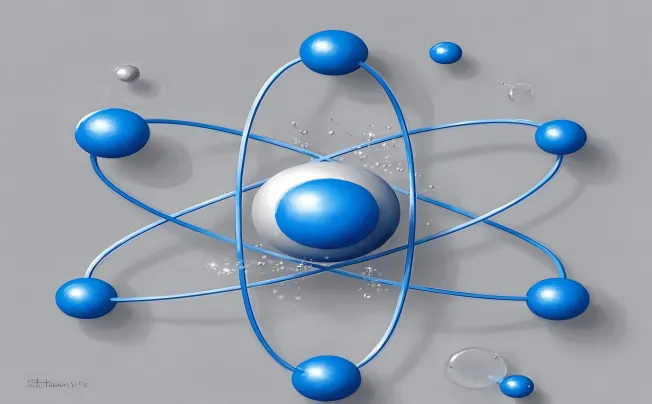Silicon mining, a crucial component of the global technological landscape, involves the extraction of silicon, a versatile element widely used across various industries.
Major Silicon Mining Regions Around the World
- The United States - California and Washington
Silicon mining in the United States is primarily concentrated in the states of California and Washington. In California, specifically in the region around San Bernardino County, there are significant silicon deposits that have been mined for decades. The abundance of quartz, a key component of silicon, makes California a crucial player in the global silicon market.
Washington state is also known for its silicon mines, particularly around Wenatchee and Spokane. These regions boast rich silica deposits that are essential for producing high-quality silicon.
- Brazil: The Land of Pristine Silicon Reserves
Brazil stands out as a major player in the global silicon mining industry due to its vast reserves of high-purity silica. Regions such as Minas Gerais and Bahia are renowned for their pristine silicon deposits that are sought after by manufacturers worldwide.
The Brazilian government has invested significantly in modernizing mining infrastructure to meet the growing demand for silicon. With its abundant resources and advanced extraction techniques, Brazil continues to be a key supplier of high-grade silicon.
- China: The Silicon Powerhouse of Asia
As one of the world's largest producers and consumers of silicon, China plays a dominant role in shaping the global silicon market. Major mining regions such as Inner Mongolia, Jiangsu, and Yunnan are known for their extensive silica reserves that fuel China's industrial growth.
Chinese companies leverage advanced technology and efficient extraction methods to maximize production output while meeting stringent quality standards. With its strategic focus on silicon mining, China remains a powerhouse driving innovation and sustainability in the industry.
- Russia: Silicon Mining Amidst Natural Splendor
Russia boasts diverse geographic landscapes that house valuable mineral resources, including significant silica deposits crucial for silicon production. Regions like Siberia and the Kamchatka Peninsula are home to flourishing silicon mines nestled amidst breathtaking natural scenery.
Russian mining operations blend traditional techniques with modern advancements to extract silica efficiently while minimizing environmental impact. Despite logistical challenges posed by remote locations, Russia's dedication to sustainable mining practices positions it as an important player in the global silicon supply chain.
Silicon Extraction Methods
Open-Pit Mining vs. Underground Mining
Once a suitable site has been identified, the next step involves determining the most efficient extraction method for silicon mining. Open-pit mining is commonly used for shallow silicon deposits located near the surface. Heavy machinery, such as excavators and haul trucks, are employed to remove overburden material and extract raw silicon ore from large open pits. This method is cost-effective but can have significant environmental impacts due to land disruption.
In contrast, underground mining is utilized for deeper silicon deposits that cannot be accessed through surface excavation. Miners use tunnels and shafts to reach subterranean ore bodies, employing specialized equipment for drilling, blasting, and hauling operations underground. While underground mining presents fewer surface disturbances compared to open-pit methods, it poses unique safety challenges due to confined spaces and potential rock instability.
The choice between open-pit and underground mining depends on factors like deposit depth, ore grade, cost considerations, and environmental sustainability goals.
Processing and Refining Techniques
After extracting raw silicon ore from the ground, it undergoes a series of processing and refining stages to transform it into usable materials for various industries. The first step involves crushing and grinding the ore into fine particles before subjecting it to chemical treatments for purification.
Silicon extraction typically involves smelting processes where high temperatures are used to melt the ore concentrate and separate impurities from pure silicon metal. Refining techniques such as electrolysis or fractional crystallization further purify the extracted silicon metal by removing residual contaminants like carbon or oxygen.
Precise control measures are implemented during refining operations to ensure high purity levels required for semiconductor production or other industrial applications. Advanced technologies continue to enhance processing methods by optimizing efficiency, reducing energy consumption, and minimizing waste generation in the quest for sustainable silicon production.
Silicon Recycling and Circular Economy
The Importance of Recycling Silicon Materials
Recycling silicon materials is crucial in today's world where sustainability and environmental consciousness are at the forefront of industrial practices. Silicon, a vital component in electronic devices, solar panels, and many other products, can be recovered and reused through recycling processes.
By recycling silicon materials, we can reduce the need for new silicon extraction, thereby conserving natural resources and minimizing environmental impact. This practice also helps to decrease the carbon footprint associated with mining and processing virgin silicon.
Processes Involved in Silicon Recycling
The process of recycling silicon involves several key steps to ensure efficient recovery and reuse of this valuable material. First, collected silicon scraps or end-of-life products are sorted based on their composition and purity levels. Next, these materials undergo cleaning procedures to remove any contaminants or impurities that may have accumulated during use.
The cleaned silicon is then crushed, melted down, and reformed into ingots or granules for use in manufacturing new products. Advanced technologies such as chemical purification methods and thermal treatments are often employed to achieve high-quality recycled silicon materials.
The Benefits of a Circular Economy Approach to Silicon Production
Adopting a circular economy approach to silicon production offers numerous benefits for both businesses and the environment. By closing the loop through recycling practices, companies can reduce their reliance on virgin resources while cutting down on waste generation.
This approach promotes resource efficiency and cost savings by utilizing existing materials in multiple product life cycles. Furthermore, embracing a circular economy mindset fosters innovation in sustainable practices within the industry, driving towards a more environmentally friendly future for silicon mining and production processes.
Future Trends in Silicon Mining
Growth Projections for the Global Silicon Market
The future of silicon mining holds promising growth prospects, driven by the increasing demand for silicon in various industries such as electronics, solar energy, and automotive. According to market reports and industry analyses, the global silicon market is expected to witness substantial expansion in the coming years.
Factors contributing to this growth include the rise of renewable energy technologies like solar panels that heavily rely on silicon, as well as the continuous advancements in electronics manufacturing that require high-quality silicon components. Furthermore, emerging economies' rapid industrialization and urbanization are also anticipated to fuel the demand for silicon materials on a global scale.
Impact of Emerging Technologies on the Industry
The landscape of silicon mining is undergoing significant transformation with the integration of cutting-edge technologies. Advancements in automation, data analytics, and artificial intelligence are revolutionizing traditional mining processes, making them more efficient and sustainable. Automation technologies enable miners to operate machinery remotely and optimize production while reducing risks to human workers.
Moreover, data analytics tools provide valuable insights into resource management and predictive maintenance strategies, enhancing overall operational efficiency. The adoption of these emerging technologies not only improves productivity but also minimizes environmental impact through optimized resource utilization.
Opportunities for Sustainable Practices in Silicon Mining
As sustainability becomes a critical focus across industries worldwide, opportunities arise for implementing eco-friendly practices within the silicon mining sector. Companies are increasingly investing in research and development to explore greener extraction methods that reduce energy consumption and minimize carbon emissions during processing. Additionally, there is a growing emphasis on water conservation strategies and reclamation efforts to mitigate environmental impacts on local ecosystems.
Collaborations between mining companies and environmental organizations aim to promote responsible mining practices that prioritize biodiversity conservation and community engagement. By embracing sustainable initiatives such as recycling programs and renewable energy integration, the silicon mining industry can pave the way toward a more environmentally conscious future.








